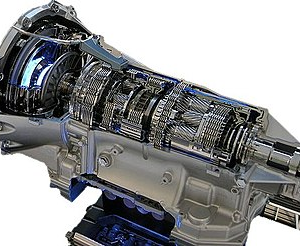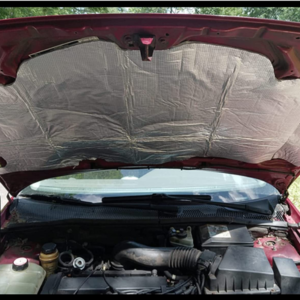
$139 at AMAZON
A car’s performance depends on its shocks, which provide a comfortable and level ride. But as time passes, the vehicle’s suspension deteriorates. The severity and discomfort of potholes and speed bumps may have increased. In this situation, you should replace your shocks, which you can accomplish by yourself in an afternoon with the correct tools and some hard work. You can change the shock absorbers in your automobile on your own with a little work if you need to but don’t want to spend a high mechanic’s cost.
Types of Shock Absorbers
- Coil shocks are made with a coiled spring wrapped around the shock’s body, which supports the weight of the car and regulates how the suspension moves. Because they are adjustable, you can raise or lower your truck as necessary to achieve peak performance.
- Twin tube shocks The piston is enclosed in a pair of tubes, one inside the other, along with a layer of shock fluid and air. Some older twin-tube shocks have a propensity to produce this foamy, frothy mixture, which can have an impact on performance, though some more recent models have a nitrogen mixture that solves the problem. They frequently appear on off-road vehicles.
- One piston in a monotube shock separates the layer of nitrogen from the air. Monotube shocks have a tube and two pistons and function similarly to twin-tube shocks. It is a well-liked performance option for trucks and runs cool.
- Fluid, compressed air, or nitrogen are added to reservoir shocks. The fluid comes into contact with the gas as the shock absorber bounces, creating resistance and reducing the spring motion.
The majority of cars have front struts and rear shock absorbers. The spring and shock are both parts of the system known as struts. It is more difficult to replace them. Although changing the shocks on the back of your car may look frightening, it’s not as difficult as it first appears. It only takes an hour or two to complete the project at home. It’s crucial to note that you should change your shocks in pairs. The likelihood of both shocks failing increases if one shock fails. Fortunately, OEM replacement shock absorbers are fairly cheap. Especially if you get them from a trustworthy internet retailer like Honda Genuine Parts & Accessories. Honda Genuine Parts & Accessories.
Buying Replacement Shock Absorbers

Preparing for the Project
Apply and spray lubricating oil over the top and bottom mounting bolts a day or two before you begin the project. The task will be simpler as a result. A socket wrench and a few suitable-sized sockets are required. Additionally, you need a torque wrench to tighten the nuts after installing the shocks. After that, carefully lift the car and place it on jack supports. Then take off the back wheels of your car. The shock absorber can be found behind the brake rotor.
Removing and Replacing the Shock Absorbers in 6 Steps
We fervently advise purchasing new OEM shocks. Here is a list of some of the various explanations. In a word, OEM is the more cost-effective and secure choice. It’s time to be ready for the project once you have your replacement shocks. Before we get started, we should point out that the Honda Odyssey is the basis for these instructions. However, the procedures are essentially the same for all Honda models.
- Find the nut on the shock absorber’s top. Loosen it, but don’t completely remove it just yet.
- At the shock absorber’s base, unbolt the nut and bolt. You might have to pound the bolt out.
- The shock’s top nut should then be removed.
- Remove the vehicle’s shock absorber.
- To install the new shock absorber, perform the process in reverse.
- The fasteners should be tightened using a torque wrench.
- Follow the same procedure, but with the opposite shock.

Jack your vehicle in an appropriate location.
Park your car on a level surface and loosen the lug nuts on both sides of the front or back end. Secure your vehicle with ramps and/or jack stands. Check your owner’s manual for the correct jack positioning. When you’ve got the car up, remove the wheels and locate the shocks.
Shocks will be affixed with a vertical bolt that has to be extracted from within the engine bay or the trunk, or may be positioned at the top by a horizontal bolt that has to be unfastened and knocked out of position.
Check the shock mountings and spray them with metal cleaner.
The most difficult part of the job is removing the old shocks, which can have a tendency to be really gunky with both age and road-grit, making the bushings and bolts somewhat difficult to remove. Check out the mountings to see if they’re loose enough to get off, or if you’re likely to crack the rubber around the bushing. It’s ok if you do, since you’re changing out the shock anyway, but it’s usually easier to spray some WD-40 or PB Blaster in there and let it sit for a few minutes to try to loosen things up before you get to work.
Removing the Old Shocks
Remove bolts from the shock tower. Lots of cars have the top bolts under the fabric in the trunk of the car, which means you’ll have to lift up the lining to get to the shock bolts and remove them with a ratchet and socket. As always, consult your shop manual for more specific guidelines regarding the location of the shock tower bolts. In general, though, they’ll be in the trunk.
To unfasten the bolts, turn the socket and ratchet counterclockwise, greasing the bolts with penetrating fluid to eliminate any surface rust, if necessary.
Disconnect the shock from the suspension. Use a socket set or a nut splitter to disengage the nut that connects the shock to the suspension, and remove it from the bolt. If there isn’t enough room to operate the splitter, you can apply penetrating solvent.
Depending on the assembly, you may also need to disengage the knuckle at the top of brake assembly to get the the shock. Consult your owner’s manual to find out for sure. Use the same process to remove the nut that is positioned at the top and keep the nuts separate so you will know which one goes where when it is time to install your new shocks.
Remove the shock absorber from the bottom and top bolts. Wiggling the shock off the bolts can be surprisingly difficult, especially if the shocks are mounted on studs with a retaining bracket and everything’s rusty. Wiggle it around a while and it should come off eventually.
One common frustration occurs when your piston rod keeps turning with you as you’re trying to loosen the nut. You can use locking pliers on the end of the rod and keep it from turning with the pliers while loosening the nut with a wrench, but that can be just as frustrating. There’s a hollow hex kit that fits over the rod and a tailored wrench made for the purpose, available at any auto parts store for about eleven bucks.
If you need to bang on the bolt with a hammer or the end of your wrench to get it loose, that’s ok, but make sure you put one the nuts back on to use as a hitting surface. Don’t risk misaligning the bolt and messing up your ability to reinstall the shock properly. Let the metal cleaner do its work and take your time. It’ll give.
Installing New Shocks
Fit the new shock back onto the suspension control arm. You might need to use some pressure to constrict the shock as it falls into place, and you might need a help to help lift the suspension back up to reinstall the bolts in the correct positions. It can be kind of a balancing act, so it helps to have another set of hands. Screw on the nuts hand tight.
If needed, you may once again affix the anti-roll bar if you removed it earlier. Reattach it and screw the bolts back on hand-tight. Replace the shock tower nuts you removed at the beginning of the process, probably in the trunk of the vehicle.
Check your torque specs in the service manual. Before you go tightening everything back down, recheck the specifications for torque to be sure everything’s secure.
Repeat the steps to replace the other 3 shock absorbers, if necessary. Most of the shocks should wear out at the same time, so if you’re going to do one, you’re probably going to end up doing them all. Do in following the same steps and then put the wheels back on and tighten the lug nuts to finish the job.
Reference: WikiHow.com, Hondapartsonline





